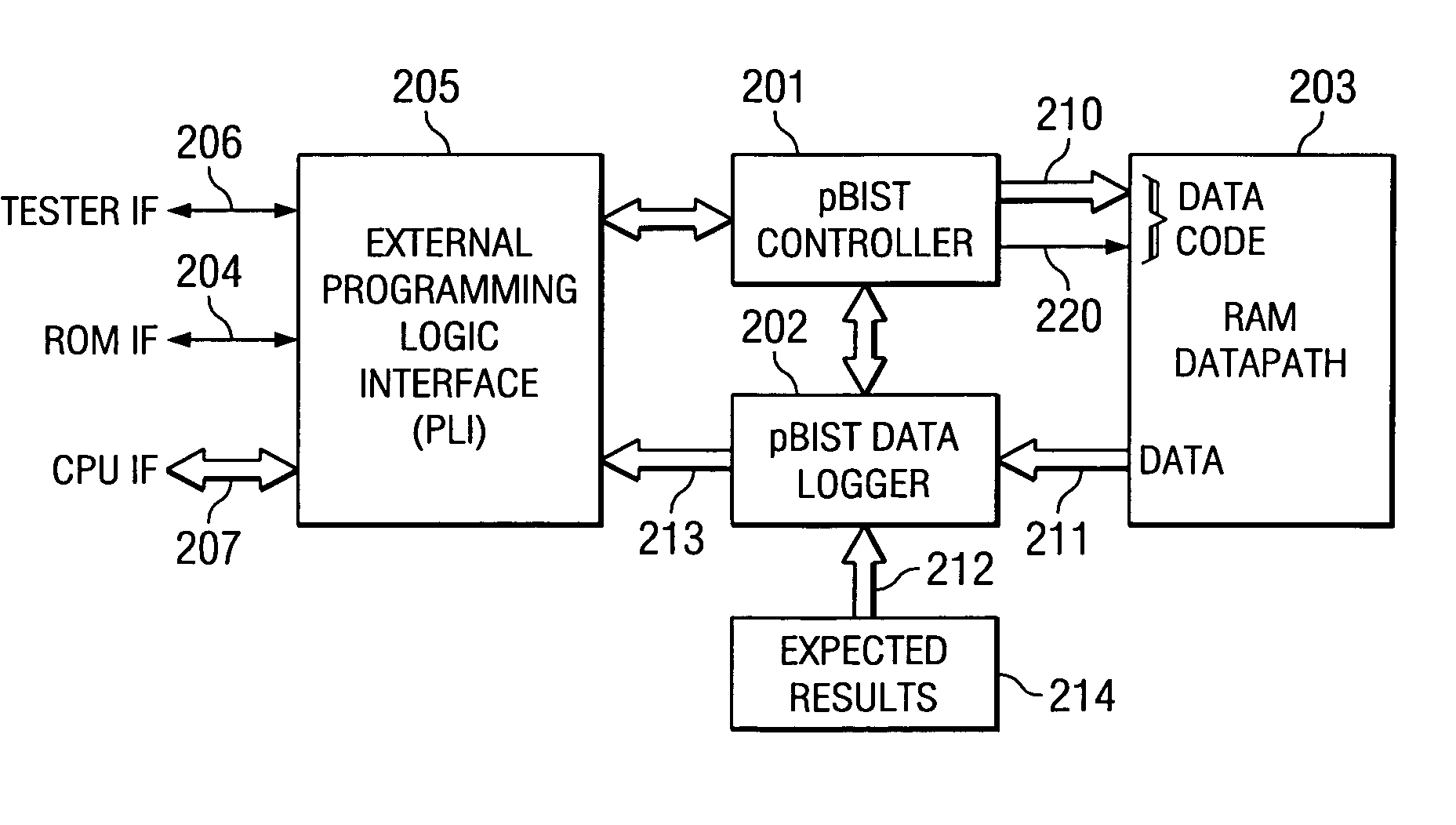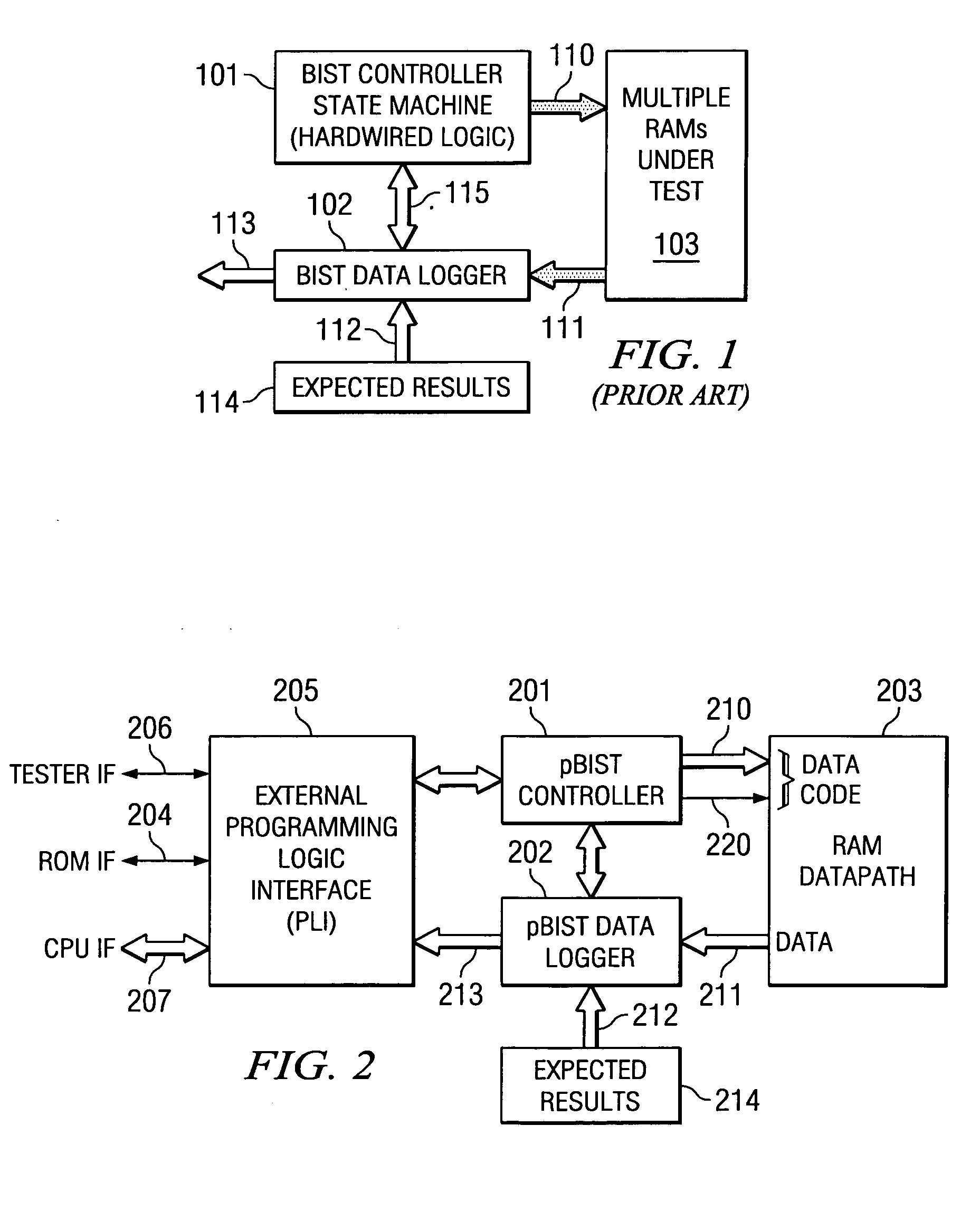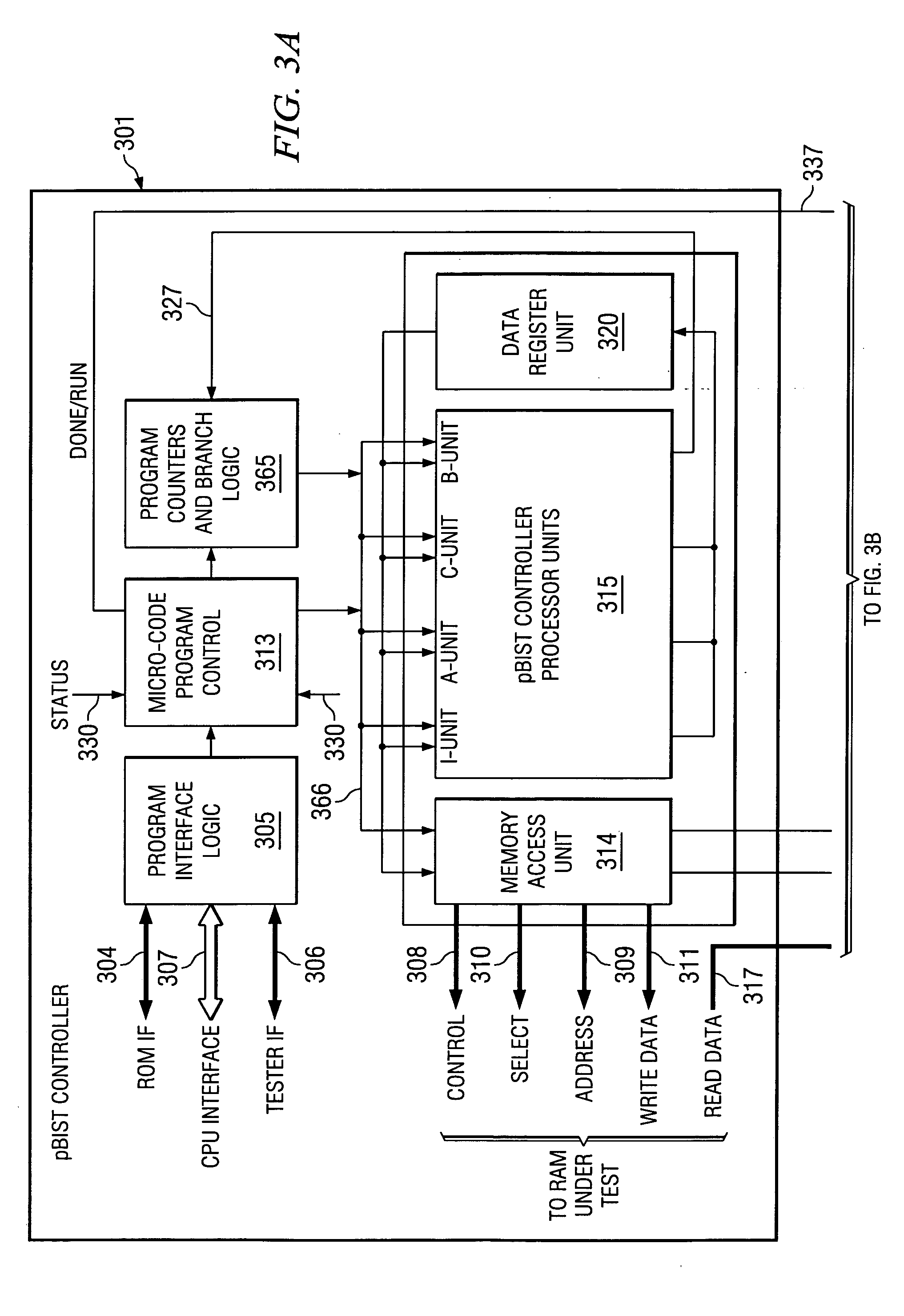Programmable built in self test of memory
a self-testing and memory technology, applied in the field of manufacture memory testing, can solve the problems of inability to decide on the detailed make-up of hardwired logic, number of limitations, and inability to do back-to-back access to all memories
- Summary
- Abstract
- Description
- Claims
- Application Information
AI Technical Summary
Benefits of technology
Problems solved by technology
Method used
Image
Examples
Embodiment Construction
[0022] Programmable Built-In Self Test (pBIST) performs memory self test using a coherent hardware-to-software interface allowing hardware access to testing logic at-speed with software controlling the detailed manner of testing. Devices employing conventional testing techniques such as memBIST and MBIST are committed to hardware solutions without programmable capabilities for modifying algorithms that are found inefficient after tape-out. All revisions of the chip must have a corrected test algorithm. CPU BIST and software BIST memory testing also have number of deficiencies. First, CPUs will not ordinarily have access to all memories. Providing such an interface increases the device cost. CPU functionality must be proved before memory testing can begin. The CPU BIST technique is slow and costly to develop because an expert device designer with thorough knowledge of the CPU must program the CPU to perform the testing. The CPU may not have back-to-back access capability to all memor...
PUM
 Login to View More
Login to View More Abstract
Description
Claims
Application Information
 Login to View More
Login to View More - R&D
- Intellectual Property
- Life Sciences
- Materials
- Tech Scout
- Unparalleled Data Quality
- Higher Quality Content
- 60% Fewer Hallucinations
Browse by: Latest US Patents, China's latest patents, Technical Efficacy Thesaurus, Application Domain, Technology Topic, Popular Technical Reports.
© 2025 PatSnap. All rights reserved.Legal|Privacy policy|Modern Slavery Act Transparency Statement|Sitemap|About US| Contact US: help@patsnap.com



